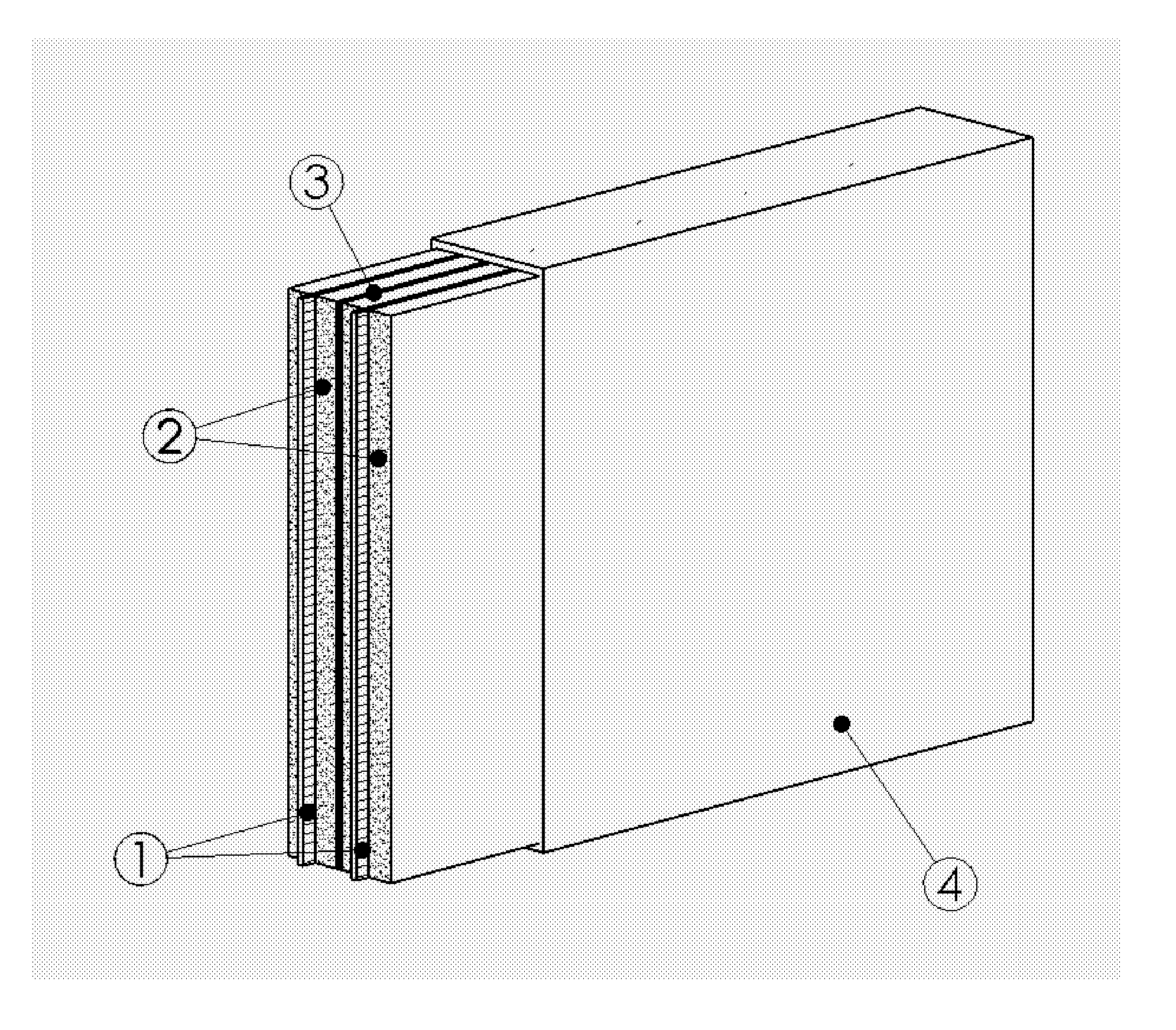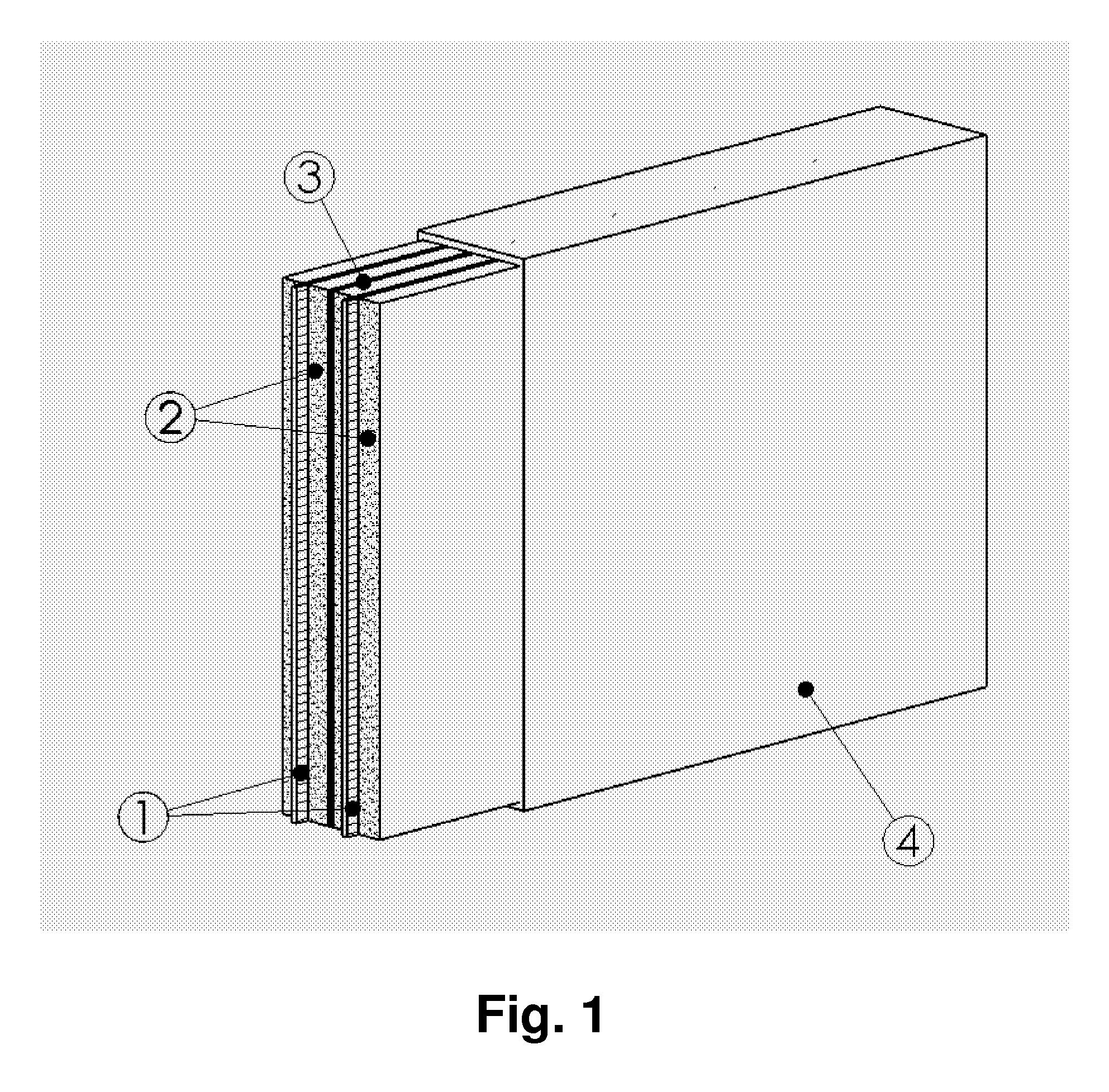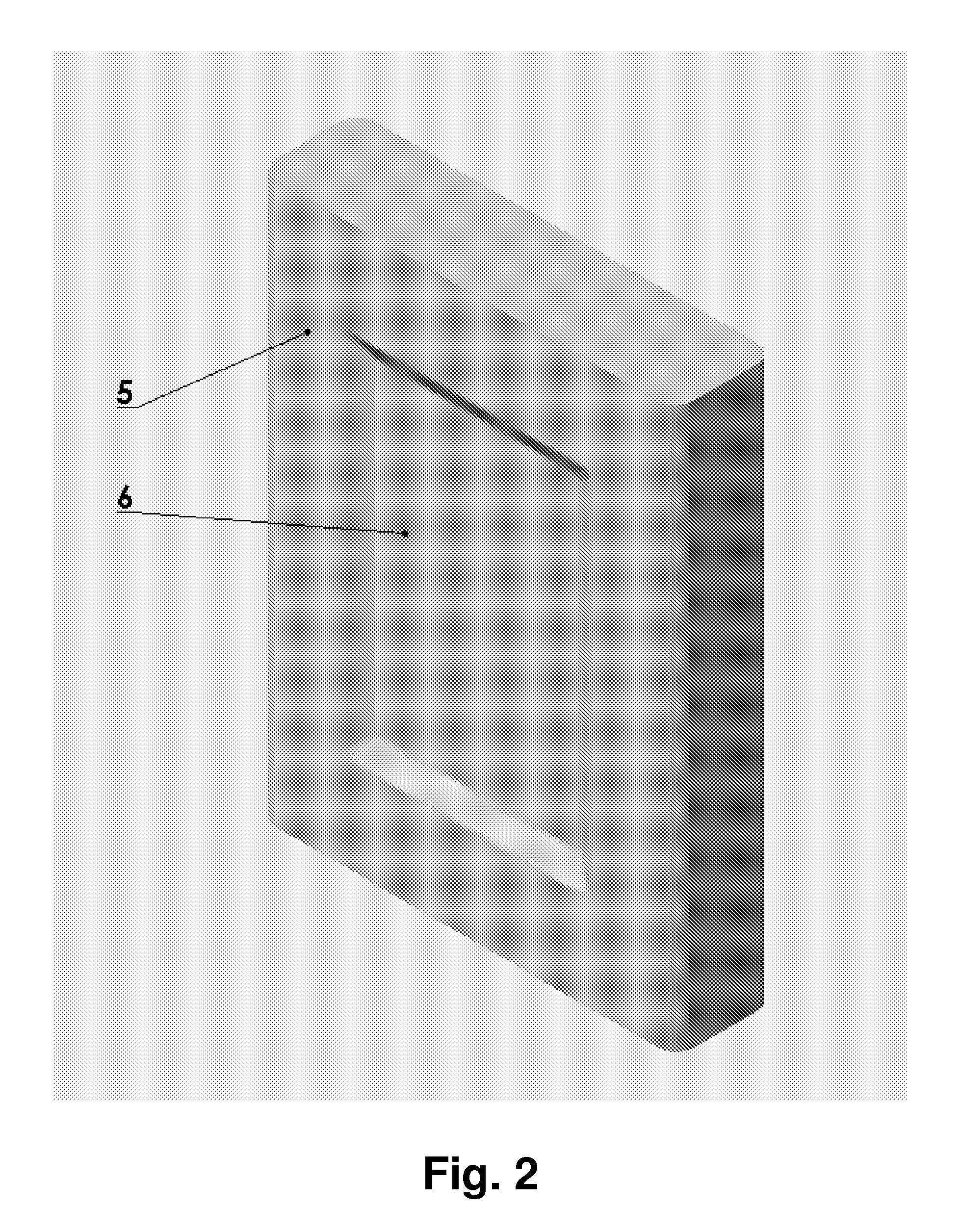Chargeable Electrochemical Cell
a technology of electrochemical cells and electrochemical accumulators, which is applied in the direction of cell components, nickel accumulators, jackets/case materials, etc., can solve the problems of low structural mechanical strength of electrodes made out of these metals, high specific weight, and high cost, so as to prevent over-shaping and whisker growth, and improve chemical activity. the effect of material us
- Summary
- Abstract
- Description
- Claims
- Application Information
AI Technical Summary
Benefits of technology
Problems solved by technology
Method used
Image
Examples
example # 1
Example #1
[0061]
Battery layout:PrismaticSpring system:Elastic CanElectrodes Cathode / Anode:3 / 2Battery chemical system:Silver - ZincBattery voltage:1.5VoltMax Battery capacity:7.1Ah(Theoretical Value)Battery capacity (1500 hr):5AhBattery 0verall thickness:8.1mmBattery width:34mmBattery length:47mmSilver electrode thickness:1.0mmZinc electrode thickness:1.0mmSilver weight:21.75gZinc weight:8.6gWeight of total active material:30.35gWeight of electrolyte, KOH:6.5gWeight of accessories12.15gTotal weight of battery49.0gSpecific weight (max):215Wh / kgSpecific weight (500 hr):153Wh / kgEnergy density (max):810Wh / lEnergy density (500 hr):580Wh / l
example # 2
Example #2
[0062]
Battery layout:PrismaticSpring system:Elastic CanElectrodes Cathode / Anode:6 / 7Battery chemical system:Silver - ZincBattery voltage:1.5VoltMax Battery capacity:100Ah(Theoretical Value)Battery capacity (500 hr):70AhBattery 0verall thickness:17mmBattery width:42mmBattery length:200mmSilver electrode thickness:1.33mmZinc electrode thickness:1.0mmSilver weight:201gZinc weight:147gWeight of total active material:348gWeight of electrolyte, KOH:91gWeight of accessories75gTotal weight of battery537gSpecific weight (max):190Wh / kgSpecific weight (500 hr):130Wh / kgEnergy density (max):1050Wh / lEnergy density (500 hr):740Wh / l
example # 3
Example #3
[0063]
Battery layout:prismaticSpring system:RubberElectrodes Cathode / Anode:2 / 1Battery chemical system:Silver - ZincBattery voltage:1.5VoltMax Battery capacity:12.3Ah(Theoretical Value)Battery capacity (500 hr):10.4AhBattery thickness:3.7mmBattery length:81mmBattery width:61mmSilver electrode thickness:0.93mmZinc electrode thickness:0.86mmSilver weight:44gZinc weight:32gWeight of total active material:76gWeight of electrolyte, KOH:11gWeight of accessories12gTotal weight of battery88gSpecific weight (max):215Wh / kgSpecific weight (500 hr):153Wh / kgEnergy density (max):810Wh / lEnergy density (500 hr):580Wh / l
PUM
| Property | Measurement | Unit |
|---|---|---|
| thickness | aaaaa | aaaaa |
| thickness | aaaaa | aaaaa |
| thickness | aaaaa | aaaaa |
Abstract
Description
Claims
Application Information
 Login to View More
Login to View More - R&D
- Intellectual Property
- Life Sciences
- Materials
- Tech Scout
- Unparalleled Data Quality
- Higher Quality Content
- 60% Fewer Hallucinations
Browse by: Latest US Patents, China's latest patents, Technical Efficacy Thesaurus, Application Domain, Technology Topic, Popular Technical Reports.
© 2025 PatSnap. All rights reserved.Legal|Privacy policy|Modern Slavery Act Transparency Statement|Sitemap|About US| Contact US: help@patsnap.com



